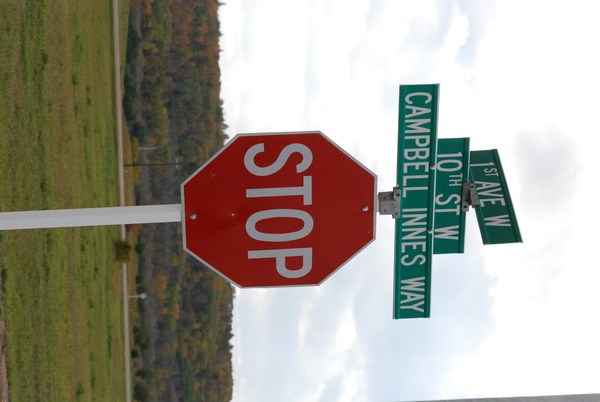Joseph Anderson, a turn of the century clergyman, once said "There is nothing that solidifies and strengthens a nation like the reading of the nation's own history, whether that history is recorded in books, or embodied in customs, institutions and monuments."
The extensive history of the Battlefords, a history that plays an important part in defining a community, and even a nation, has, for the most part, been kept alive in books, schools and institutions such as the Battlefords North-West Historical Society.
But every so often, the fire that is our heritage wanes and threatens to slip into the darkness of forgetfulness. Sometimes, we lose these pieces of ourselves, but sometimes we are fortunate enough and someone steps in to save what would otherwise be lost.
It is difficult to imagine the Battlefords without the Fort, but were it not for one passionate historian, Fort Battleford, and much of the tales accompanying it, would have been lost forever.
Campbell Innes was born in Ontario in 1886. He attended both McGill and Queens University, served with the Royal Canadian Engineers during the First World War, worked briefly at the University of Chicago and taught at various schools throughout Canada, including a stint as principal in Lloydminster.
In 1920, Innes accepted the position of principal at what was then known as Battleford High School.
While in the Battlefords, Innes became enamored of the rich history in the area and, along with his two sons, Bruce and Ross, Innes travelled throughout northwestern Saskatchewan, gathering artifacts and stories from pioneers and locating sites of historical importance. Innes also organized many field trips so his students could experience the rich past in the area.
In an editorial written after Innes and his wife were killed in a highway accident near Maidstone in 1961, Irwin McIntosh, Saskatchewan's 15th lieutenant governor and publisher of the News-Optimist, extols Innes's influence on his students.
"He bequeathed to hundreds of former students self discipline and a respect for the finer things of life," wrote McIntosh.
Innes is perhaps best remembered, however, as the man who saved Fort Battleford.
At the time Innes was teaching, what is now the Fort Battleford National Historic Site was just a ramshackle group of disintegrating buildings, having been used for grain storage and other menial uses since it was abandoned in 1924.
Innes, along with the help of other concerned citizens, petitioned and raised funds to have the buildings at the site restored.
"As a result of his prodding and vision, Fort Battleford was turned from a wheat storage depot into a provincial memorial museum and finally a National Historic Park," wrote McIntosh. "Without Campbell Innes and his vision, such a transformation would not have been possible."
McIntosh was not the only lieutenant governor to recognize Campbell's contributions. Grant MacEwan, the ninth lieutenant governor of Alberta, wrote, "Canadians were slow in recognizing the charm, the romance and the practical importance of their history and much of it would have been lost had it not been for the dedication of a few pioneer historians like Campbell Innes."
Other accomplishments of Innes include airing two radio series narrated by his wife, restoring the Gardiner Presbyterian Church, serving a term on the Canadian Historic Sites and Monuments Board, serving a term as president of the Saskatchewan Hockey Association and aiding his son Ross in researching and writing portions of the historic novel, The Sands of Time.
Gil Bellavance, president of the Battlefords North-West Historical Society, said Innes was an outstanding member of society, whom he can only hope to live up to, which is rather appropriate, seeing as it was Innes who founded the historical society in 1924.
"He was somebody who really, really believed in the importance of history," said Bellavance.
To honour the importance of Innes's contributions, the Battlefords North-West Historical Society has been lobbying since 2006 to have the resource room in Battleford Central School renamed the Campbell Innes Room.
Previously, the society successfully lobbied to have 10th Street in Battleford renamed Campbell Innes Way.
At their last regular meeting, Sept. 8, Living Sky School Division board members discussed the possibility of renaming the resource room.
"If the local community wants it and the school wants it, I don't see why it's a problem," said board member Garth Link.
Jack Snell said he knows of libraries and gyms in schools that have been named after important educators, but while he knows why the rooms bear those names, he said he doubted many students or parents know who those people were or what their contributions were.
After discussing the matter, the board decided a plaque detailing Innes's contributions to the Battlefords would be a preferable idea and indicated a letter would be sent to the historical society, explaining their reasoning.
Whatever the monument to Innes may be, perhaps R.R. Cunningham, a former reporter for the News-Optimist, said it best when he wrote: "There is already a deep and abiding memorial, one that rust will not consume, nor time destroy, for it is written deep on the hearts of the many, many students who sat at his feet."



